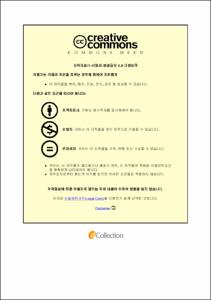비조영강증강 전산화 단층촬영과 임상 요인에 기반한 비알콜성 지방간 질환 예측 지수의 개발과 검증
- Abstract
- 목적: 전산화 단층촬영(CT) 소견과 기본 임상 데이터를 이용하여 대규모 성인 코호트에서 비알코올성 지방간 질환(NAFLD)의 신뢰성 있는 진단과 병리학적으로 진단된 NAFLD를 배제할 수 있는 예측 지수를 개발하고 검증하려 한다.
연구방법: CT와 간조직검사를 3일 이내에 시행한 2218명의 성인 간 기증자를 대상으로 후향적 연구를 진행하였다. 간 기증자들을 2:1의 비율로 개발군과 실험군으로 무작위 배정하였다. 비조영증강 CT에서 간의 Hounsfield unit (HU) 로부터 비장의 HU과 차이를 구하여 CTL-S를 구하였다. 개발군에서 임상 요인 중 후보 예측 요인들을 multivariable logistic regression analysis를 이용하여 선정하여, 병리학적으로 진단된 NAFLD를 예측하는 Clinical-CT index를 개발하였다. Areas under the receiver operating characteristic curve (AUC) 분석으로 진단능을 평가하였으며 개발군에서 90%의 민감도와 90%의 특이도에 해당하는 clinical-CT index의 cutoff를 설정하였고 실험군에서 진단능을 평가하였다.
연구결과: 임상 요인으로는body mass index, aspartate transaminase, 그리고 triglyceride concentrations가 clinical-CT index에 포함되었다. 실험군에서 clinical-CT index의 NAFLD의 진단능은 (AUC, 0.81) CTL-S 단독과 (0.74; P < 0.001) 기존 clinical indices (0.73–0.75; P < 0.001) 를 능가하였다. Cutoff ≥46 에서 민감도와 특이도는 각각 89%와 41% 였으며 cutoff ≥56.5 에서 민감도와 특이도는 각각 57%와 89% 였다.
결론: Clinical-CT index는 NAFLD를 진단하는 데 있어 CTL-S 또는 clinical index 단독보다 정확하며 NAFLD를 진단하거나 배제하는데 있어 임상적으로 유용할 것으로 기대된다.|Objective: A widely applicable, non-invasive screening method for the nonalcoholic fatty liver disease (NAFLD) is needed. We aimed to develop and validate an index combining computed tomography (CT) and routine clinical data for the reliable diagnosis and exclusion of pathologically proven NAFLD in a large cohort of adults.
Materials and Methods: This retrospective study included 2218 living liver donors who underwent liver biopsy and CT within 3 days. Donors were randomized 2:1 into development and test cohorts. CTL-S was measured by subtracting splenic attenuation from hepatic attenuation on non-enhanced CT. Multivariable logistic regression analysis of the development cohort was utilized to develop a clinical-CT index predicting pathologically proven NAFLD. The diagnostic performance was evaluated by analysis of areas under the receiver operating characteristic curve (AUC). The cutoffs for clinical-CT index were determined for 90% sensitivity and 90% specificity in the development cohort, and their diagnostic performance was evaluated in the test cohort.
Results: The clinical-CT index included CTL-S, body mass index, and aspartate transaminase and triglyceride concentrations. In the test cohort, the clinical-CT index (AUC, 0.81) outperformed CTL-S (0.74; P < 0.001) and the clinical indices (0.73–0.75; P < 0.001) for diagnosing NAFLD. A cutoff of ≥46 had a sensitivity of 89% and a specificity of 41%, whereas a cutoff of ≥56.5 had a sensitivity of 57% and a specificity of 89%.
Conclusion: The clinical-CT index is more accurate than CTL-S and clinical indices alone for the diagnosis of NAFLD and may be clinically useful in diagnosing or excluding NAFLD.
- Issued Date
- 2019
- Awarded Date
- 2020-02
- Type
- Dissertation
- Alternative Author(s)
- Yura Ahn
- Affiliation
- 울산대학교
- Department
- 일반대학원 의학과의학전공
- Advisor
- 이승수
- Degree
- Master
- Publisher
- 울산대학교 일반대학원 의학과의학전공
- Language
- eng
- Rights
- 울산대학교 논문은 저작권에 의해 보호받습니다.
- Appears in Collections:
- Medicine > 1. Theses (Master)
- 파일 목록
-
-
Download
 200000284920.pdf
기타 데이터 / 703.41 kB / Adobe PDF
200000284920.pdf
기타 데이터 / 703.41 kB / Adobe PDF
-
Items in Repository are protected by copyright, with all rights reserved, unless otherwise indicated.